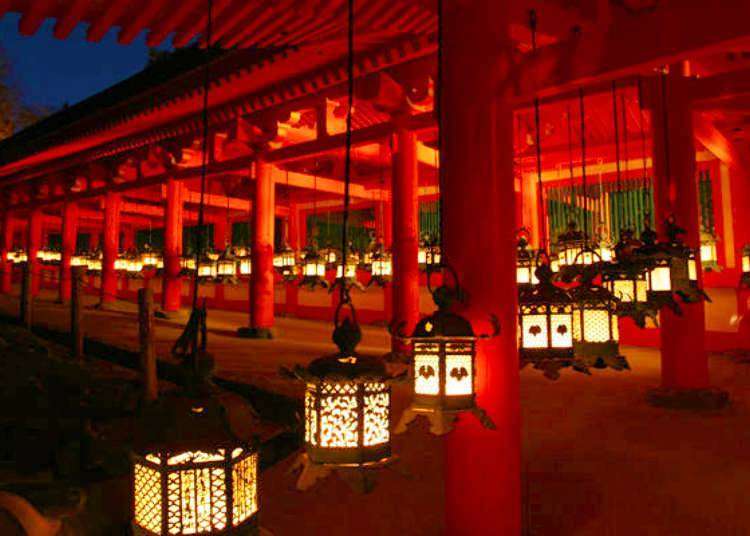
The Setsubun Mantoro is held annually in February at Kasuga Taisha on the day of the Setsubun (“the day before spring”). The sacred fire is dedicated to the gods and 3,000 lanterns flicker in the cold winter air, creating an atmosphere of mystery and solemnity.
Kasuga Taisha, located in the east of Nara Park, was established 1300 years ago to watch over the city of Heijokyo (the old name for Nara). It is said that the deity of the shrine, Takemikazuchi no Mikoto, first came to the peak of Mikasayama from Kashima.

Takemikazuchi no Mikoto rode into Nara on a white deer and thus became known as the protector of the deer. According to legend, this is why to this day many deer live in Nara Park and the surrounding area.
Kasuga Taisha has more lanterns than any other shrine in Japan. Around 2,000 stone lanterns line the path to the main shrine, with another 1,000 lanterns hanging at the shrine itself. There are 3,000 lanterns in total.
Lanterns have been dedicated to the shrine from the late Heian period onwards, their donors praying for things such as happiness and good health for their families, or success in business or good fortune in battle. Many of these lanterns show signs of their age – they are covered with moss and have faded lettering.
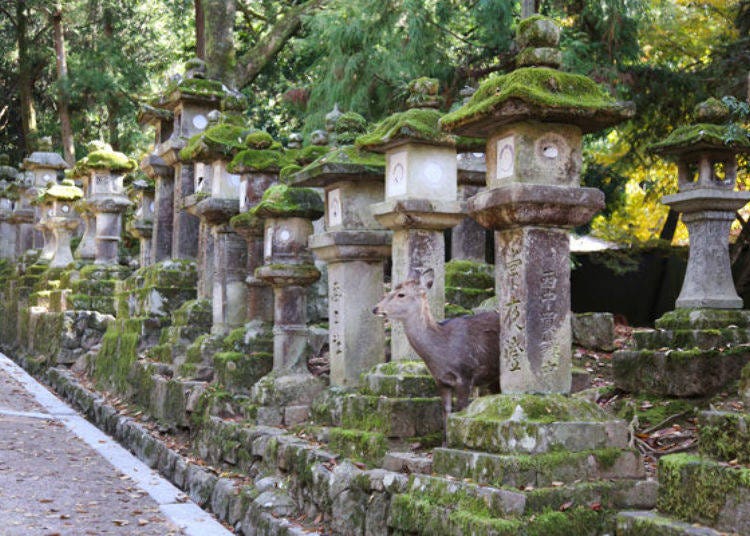
Many of Kasuga Taisha’s lanterns have deer patterns carved on them, and there are a variety of different motifs.
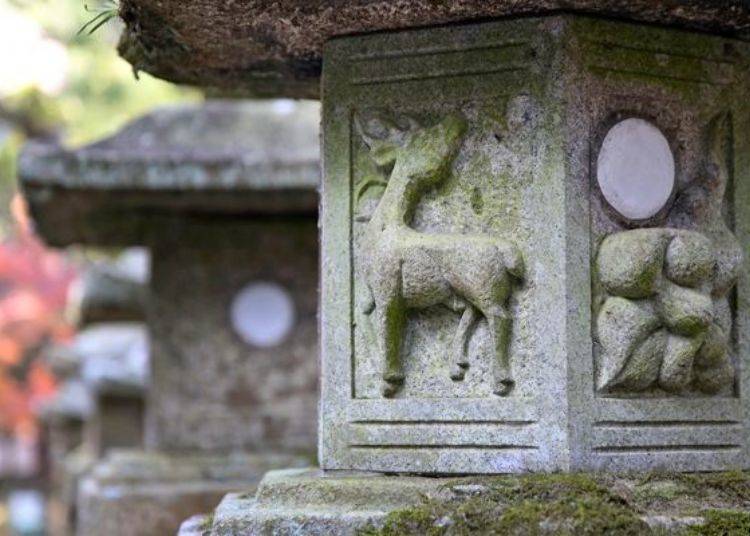
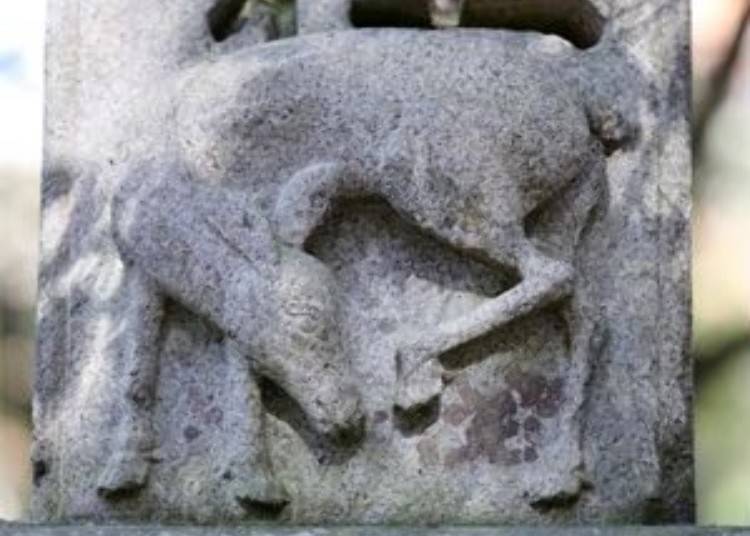
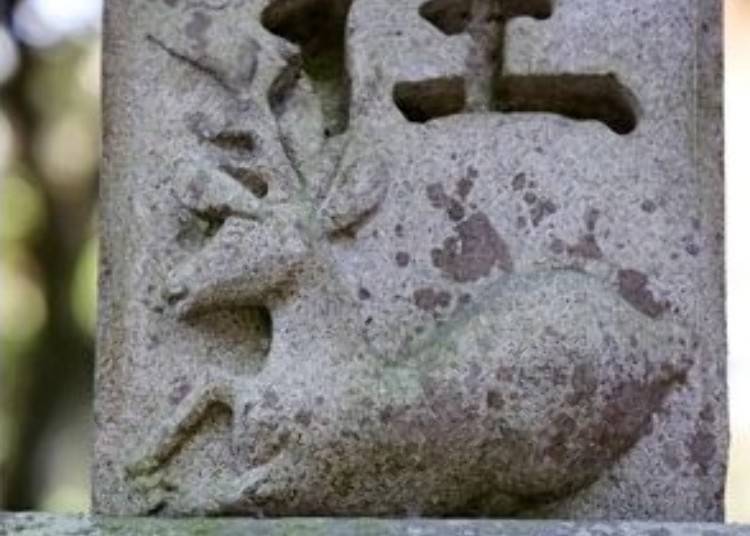
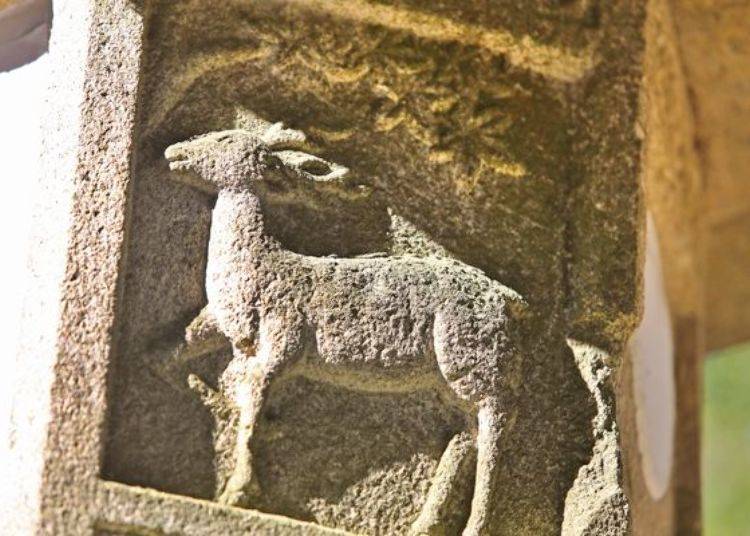
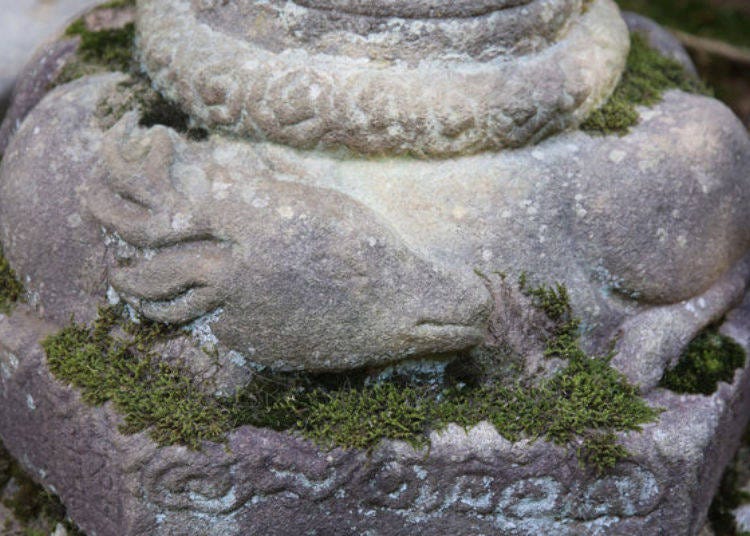
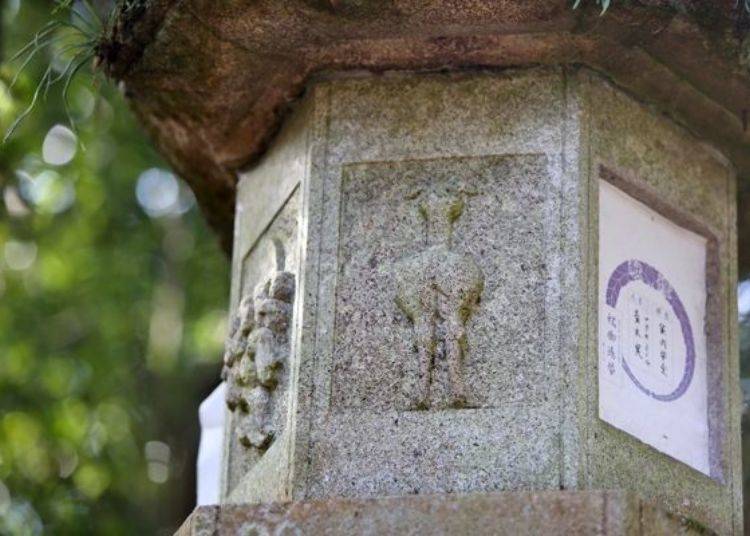
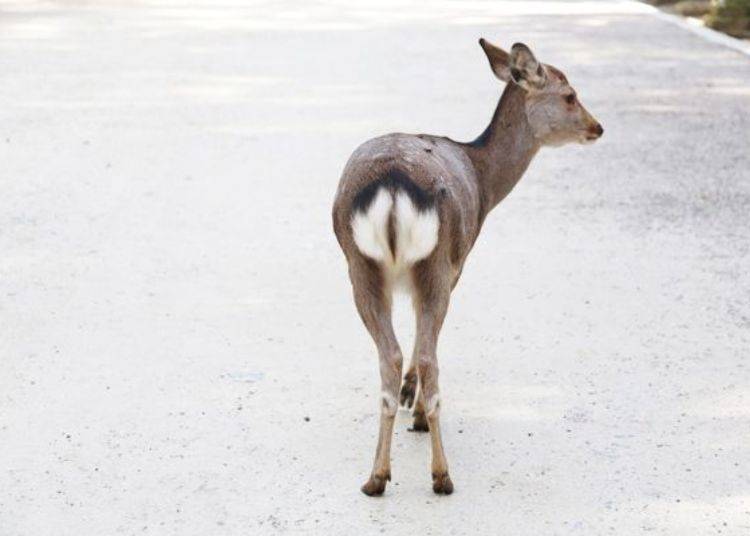
Find the right lanterns and become rich!?
Look closely at the columns of these lanterns. Most of the 2,000 columns are inscribed with the characters 春日社 (Kasugasha). But out of these, there are 15 lanterns with the inscription 春日大明神 (Kasuga Daimyojin). Legend has it that if you find three of these by evening, you’ll become a millionaire. I found two but couldn’t find the third one... To do this you have to taking a close look at all the lanterns whereas you’d usually just pass them by without thinking.
There are plenty of other rare lantern designs that we don’t have time to mention today. Try looking for these different lanterns before the Mantoro begins.
However, you need to be careful you don’t get lost walking amongst the lines of lanterns. It’s a bit like a maze!
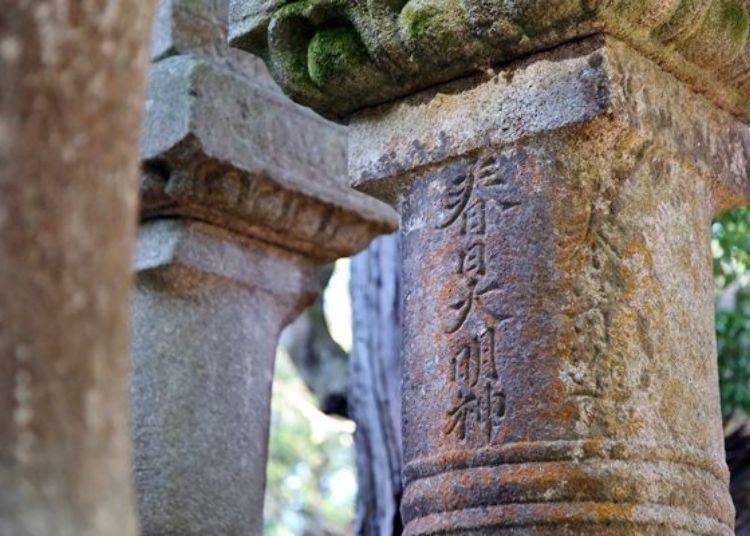
An elegant teahouse where you can sample kayu (rice gruel), the old Edo specialty
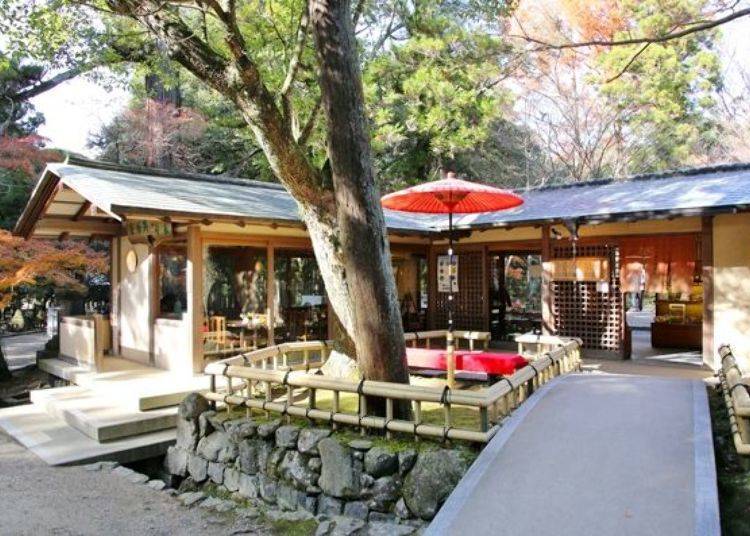
If you need some sustenance ahead of the Mantoro, why not stop by at the cafe at the side of the path to the shrine. It’s called Kasuga Ninaijaya.
As the kanji suggests, the name of the cafe (荷茶屋) literally means a teahouse (茶屋) that you carry (荷う) on your shoulder. It refers to the practice in the Edo period of teasellers carrying a box of tea and a teapot balanced at either end of a wooden pole. These were the original mobile tea houses of Kasuga shrine! This place is also mentioned as one of the highlights of Nara in the Yamatomeishozue (Guide to Notable Sights), an Edo-period travel guide to Japan.
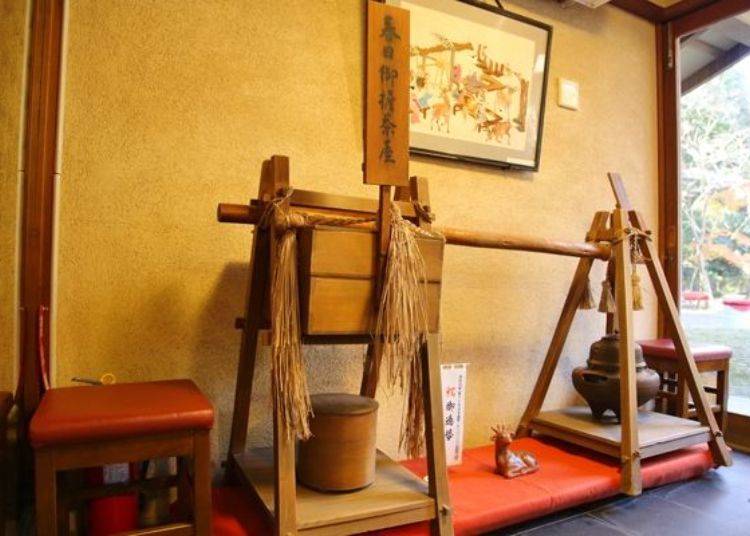
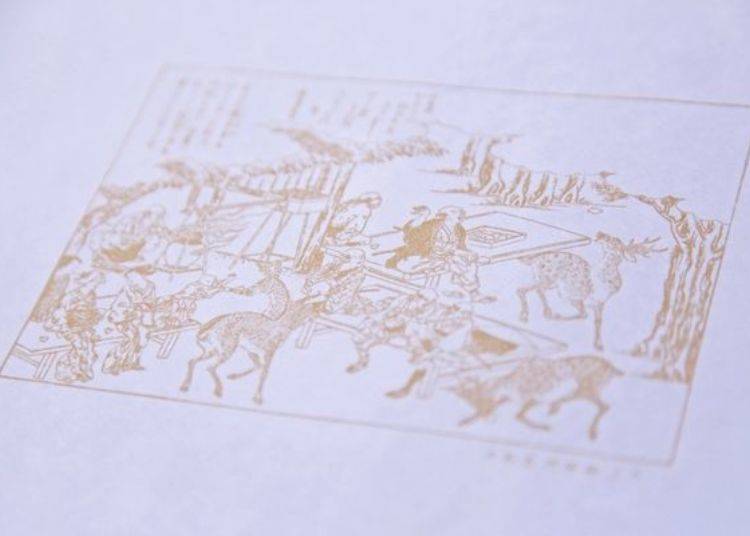
This teahouse opened on a permanent basis in 1983 to mark the 50th anniversary of the nearby Manyo Botanical Garden.
The specialty here is Manyo kayu (rice porridge). It changes monthly and features seasonal herbs from the Manyoshu (an anthology of Japanese poetry). There are a variety of seasonal favors to try, such as nanakusa (seven herbs) in January, nanohana (rape blossom) in March, or yomikigi (mugwort) in May.
The rice porridge uses sake and salt dedicated to the gods of Kasuga, with kelp dashi and white miso. It has a subtle sweetness which warms you inside even in the depths of winter.
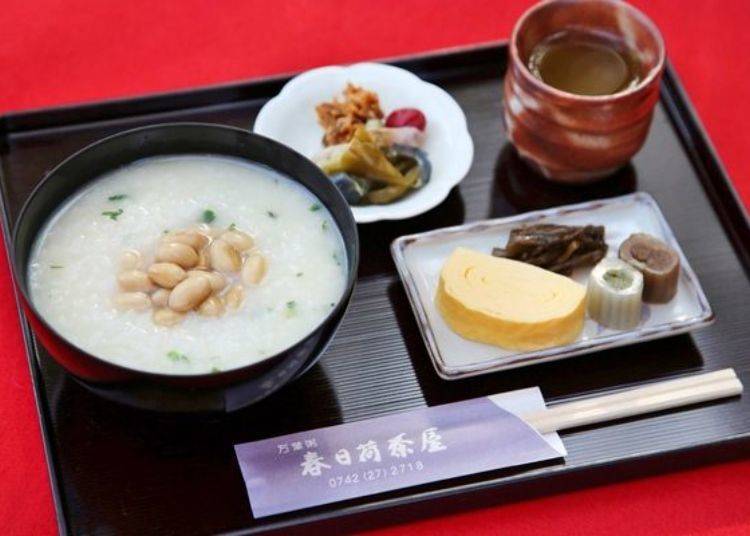
-
Kasuga Ninaijaya春日荷茶屋
- Address 160 Kasuganocho, Nara City, Nara Prefecture
- Phone Number 0742-27-2718
Opening hours: 10:00AM - 4:00PM (8:00PM on Feb 2).
Closed: Mondays except in April, May, October and November. May close on certain days depending on the season.
These enchanting lanterns will make you forget the cold!
Walk up the approach lined with stone lanterns and enter the shrine from the south gate.
Go from the South Corridor to the East Corridor, pass in front of the main building and then onto the West corridor. The pre-Edo lanterns are a green rust color, while the newer Heisei lanterns are glistening gold. There are around 1,000 lanterns hanging here.
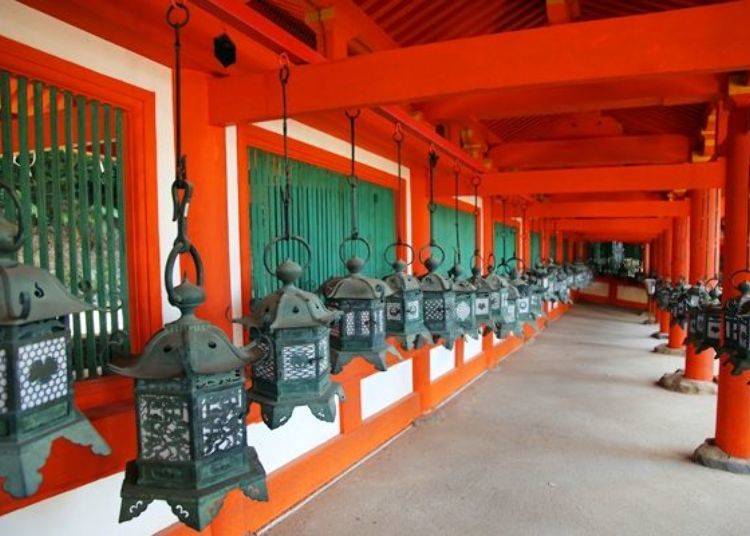
The lanterns are lit at around 6 o’clock. There’s a mystical atmosphere here, in total contrast to what it’s like in the daytime. Feel free to make a votive donation (3,000 yen per donation)
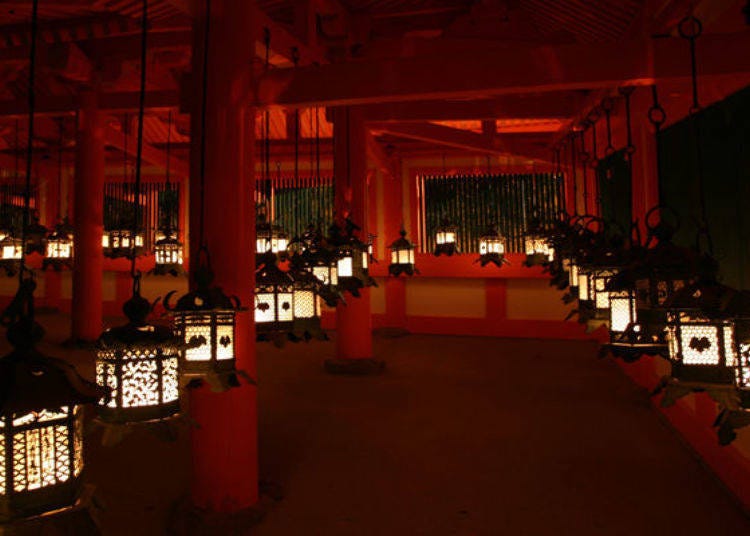
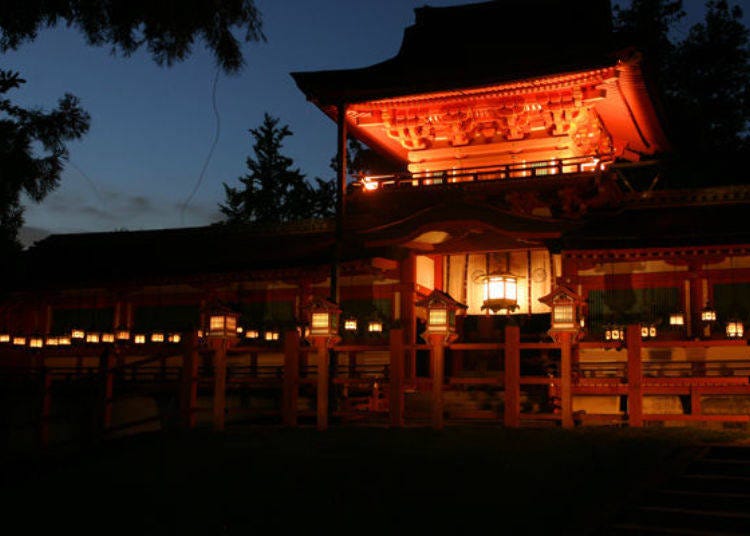
This ceremony was also held during the Muromachi and Edo periods. The traditional Setsubun chant is “Demons Out! Good Fortune In!” This year why not experience Setsubun at Kasuga Taisha amidst these mystical lanterns?
-

-
Address
160, Kasuganocho, Nara-shi, Nara, 630-8212
View Map -
Nearest Station
Nara Station (JR Kansai Main Line / JR Yamatoji Line / JR Sakurai Line)
11 minutes by car
- Phone Number 0742-22-7788
-
Address
160, Kasuganocho, Nara-shi, Nara, 630-8212
main Photo courtesy of Kasuga Taisha
Text by:EditZ
Book an unforgettable experience in Nara!
Make your trip extra memorable by booking one of these recommended tours on our partner site, Rakuten Travel Experiences!
- Area
- Category
*Prices and options mentioned are subject to change.
*Unless stated otherwise, all prices include tax.
Popular Tours & Activitiess
Recommended places for you
-

Kanzenkoshitsuyakinikutabehodai Gyugyu Paradise Sannomiya
Yakiniku
Kobe, Sannomiya, Kitano
-

Jukuseiniku-to Namamottsuarera Nikubaru Italian Nikutaria Sannomiya
Izakaya
Kobe, Sannomiya, Kitano
-
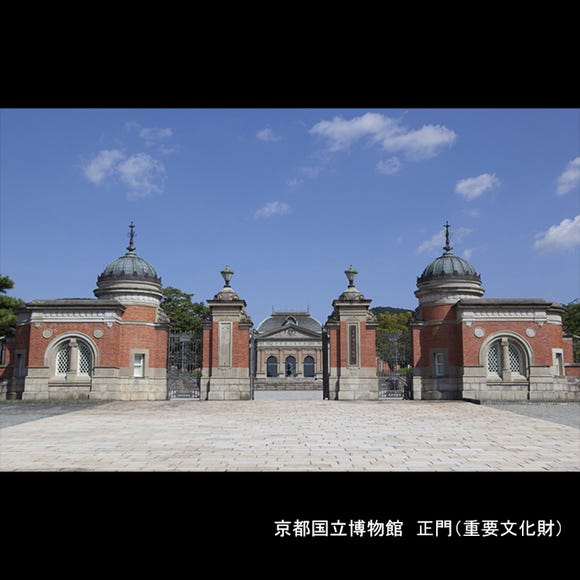
Kyoto National Museum
History Museums
Kyoto Station, To-ji Temple
-

ISHIDAYA Hanare
Yakiniku
Kobe, Sannomiya, Kitano
-
Goods

Yoshida Gennojo-Roho Kyoto Buddhist Altars
Gift Shops
Nijo Castle, Kyoto Imperial Palace
-

Kambei Sannomiyahonten
Yakiniku
Kobe, Sannomiya, Kitano
-
Ad

Discover Timeless Beauty: Kimono-en, a Web Magazine Exploring the Spirit of Kimono
-

Curious About Sake? I Visited a Sake Brewery in Japan and Here's What I Learned
-
Ad

Experiencing Manga as Culture, Not Just Reading It: Expo 2025 with Rumiko Takahashi
-

Dorsett by Agora Osaka Sakai: Stay in a World Heritage Port Town Surrounded by History and the Sea (Newly Opened in 2025)
by: Yotsuka Hizuki
-
Ad

Recharge and Relax with a Healing Getaway at Kamenoi Hotel Toba
-

History and Sustainable Brewing: World-Renowned Fukuju Sake at Kobe Shushinkan
by: WESTPLAN
Inspiration for Accommodations
-

Spacious Family Hotel in Namba: 20 Comfortable Stays for Family Fun
-

Charming Hotels to Enjoy the Spectacular Views of Arashiyama's Autumn Leaves from Your Room
-

Experience Stunning Views of Osaka Castle from Private Spaces: Top Hotels Near Osaka Castle
-

Recommended by Visitors! Arashiyama's Best-Rated Hotels
-

Family-Friendly Universal Studios Japan Hotel with Excellent Access
-

Enjoy a Comfortable Stay in Osaka! 10 Hotels with Convenient Airport Shuttle Services
-

Top 10 Recommended Hotels Near Namba Station with Great Access
-

Enjoy Night Views from Your Room! Recommended Hotels in Namba Area
-

Universal Studios Japan: Guide to Osaka's Giant Theme Park Attractions!
by: WESTPLAN
-

Kiyomizu-dera Temple: Guide to Visiting Kyoto's Most Famous Sightseeing Spot
-

5 Must-Visit Nara Temples and Shrines: Discover the Timeless Beauty of Japan's Ancient Capital
by: WESTPLAN
-

Why Osaka Tennoji Zoo is So Popular with Foreign Tourists (Guide & Highlights)
-

Ippudo Osaka and More: These 5 Ramen Restaurants in Osaka Are Going Viral
by: WESTPLAN
-

‘No Garbage?!’ 5 Times Tourists Were Shocked by Kyoto
by: WESTPLAN
- #best gourmet Osaka
- #things to do Osaka
- #what to do in kyoto
- #what to bring to japan
- #best gourmet Kyoto
- #new years in Osaka
- #what to buy in nanba
- #Visiting Osaka
- #onsen tattoo friendly arima
- #daiso
- #Visiting Kyoto
- #best japanese soft drinks
- #japanese fashion culture
- #japanese convenience store snacks
- #japanese nail trends













